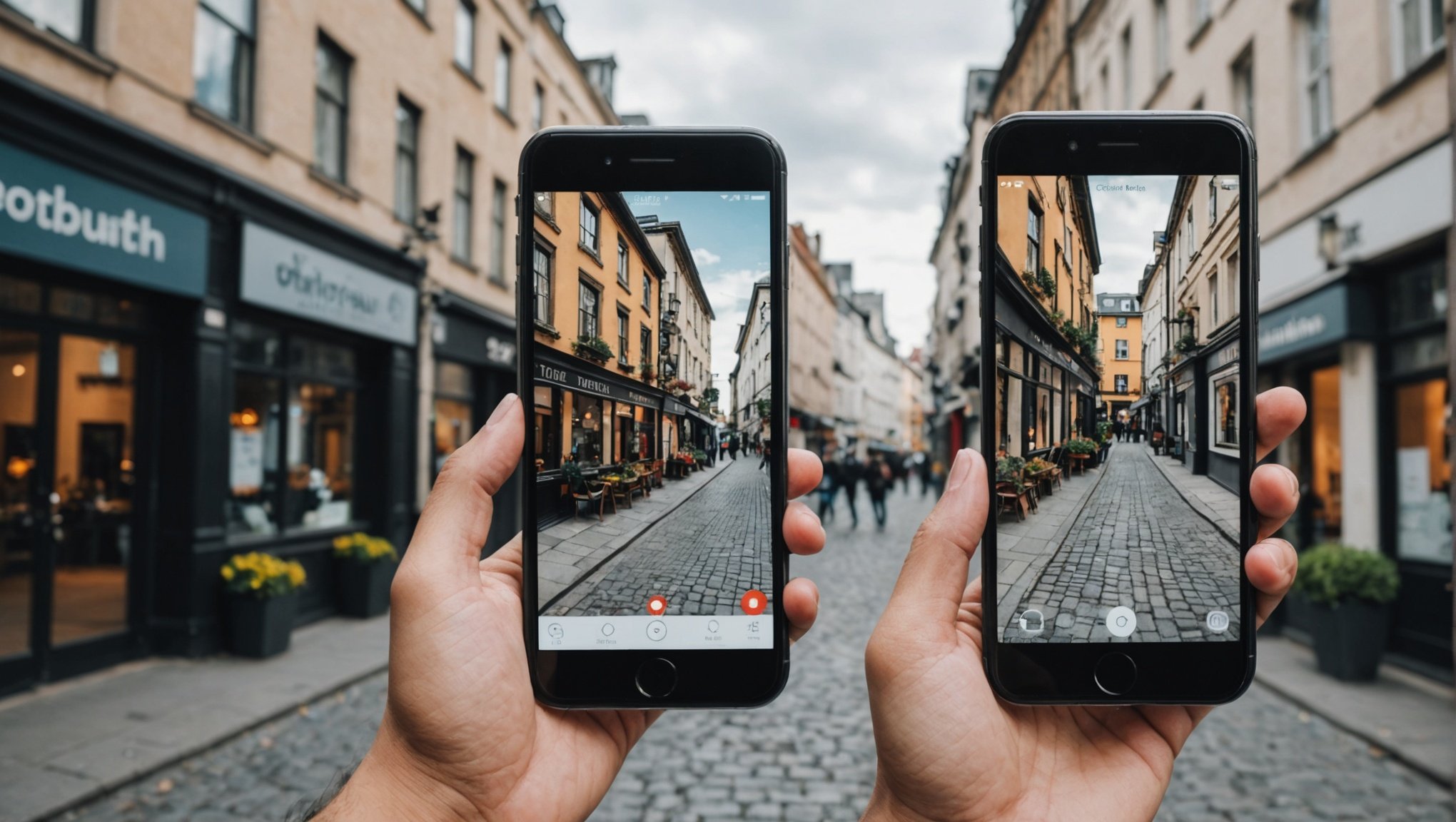Virtual tours have revolutionized the way we experience places remotely, whether for real estate, museums, or travel destinations. As we navigate through 2024, smartphones have become indispensable tools for enhancing these virtual experiences. With the right techniques, you can transform your smartphone into a powerful device that provides an immersive and interactive tour experience. This article delves into the essential techniques for using your smartphone to enhance virtual tours, ensuring you can deliver top-notch virtual experiences to your audience.
Leveraging High-Quality Smartphone Cameras for Virtual Tours
When it comes to virtual tours, image quality is paramount. With advancements in smartphone camera technology, creating high-definition visuals is more accessible than ever. Modern smartphones are equipped with powerful cameras capable of capturing stunning details, vibrant colors, and impressive wide-angle shots.
Also read : How to Use Your Smartphone for Real-Time Astrophotography?
To make the most out of your smartphone camera, begin by optimizing your settings. Ensure you are shooting in the highest resolution available and utilize the built-in HDR (High Dynamic Range) mode to balance exposure levels and enhance details in both shadows and highlights. Additionally, take advantage of the wide-angle lens to capture more expansive scenes, which can be particularly useful for real estate tours or showcasing large exhibition spaces.
Stabilization is another vital aspect. Use a smartphone gimbal or a tripod to keep your shots steady, reducing motion blur and providing a smoother viewing experience. Furthermore, experiment with different angles and compositions to create engaging and dynamic visuals that will captivate your audience.
Also to see : How to Set Up a Smart Greenhouse Using Your Smartphone?
Lastly, don’t overlook the power of post-production. Utilize editing apps like Adobe Lightroom or Snapseed to fine-tune your images, adjusting brightness, contrast, and saturation to make them pop. By presenting professionally edited visuals, you can significantly enhance the overall quality and appeal of your virtual tours.
Utilizing 360-Degree Camera Apps for Immersive Experiences
A powerful way to elevate your virtual tours is by incorporating 360-degree content. 360-degree photos and videos offer a panoramic view that allows viewers to explore an environment as if they were there in person. This immersive experience can be achieved using various 360-degree camera apps available for smartphones.
Apps like Google Street View, Panorama 360, and Cardboard Camera enable you to capture spherical images and videos effortlessly. These apps typically guide you through the process, ensuring you achieve a seamless stitch of multiple shots to create a comprehensive 360-degree view. When capturing 360-degree content, it is crucial to move slowly and steadily to avoid any distortions or inconsistencies in the final product.
Once captured, you can integrate these 360-degree visuals into your virtual tours using platforms like Matterport or Kuula, which support interactive panoramas. These platforms allow viewers to navigate through the tour by clicking and dragging to look around, creating a more engaging and interactive experience.
Moreover, consider incorporating audio elements to accompany your 360-degree visuals. Background music, ambient sounds, or informative voiceovers can add depth and context to your virtual tour, making it more memorable and informative for your audience.
Enhancing Virtual Tours with Augmented Reality (AR)
Augmented Reality (AR) has emerged as a game-changer in the realm of virtual tours, providing an additional layer of interactivity and engagement. By overlaying digital information onto the real world, AR can transform a simple virtual tour into an interactive experience that captivates and informs viewers.
Several AR apps, such as ARKit (for iOS) and ARCore (for Android), enable you to add virtual elements to your tours. These elements can include 3D models, annotations, or interactive hotspots that provide additional information when tapped. For instance, in a virtual museum tour, you could use AR to display detailed descriptions of exhibits or even animations showing how artifacts were used in ancient times.
Beyond enhancing informational content, AR can also be used for navigation. In large venues like museums or real estate properties, AR wayfinding can guide viewers through the space, ensuring they don’t miss any critical highlights. This can be particularly beneficial for self-guided tours, providing a more personalized and engaging experience.
To create effective AR content, it is essential to ensure that the virtual elements are well-aligned with the physical environment. Test your AR tour thoroughly to avoid any glitches or misplacements that could detract from the viewer’s experience. Additionally, provide clear instructions on how to use the AR features, ensuring even those unfamiliar with the technology can enjoy the enhanced tour.
Leveraging Social Media for Virtual Tour Promotion
In today’s digital age, social media is a vital tool for promoting virtual tours and engaging with a broader audience. Platforms like Facebook, Instagram, and YouTube offer various features that can help you showcase your virtual tours and attract viewers.
Start by creating teasers and highlight reels of your virtual tours to share on social media. Short, captivating clips can pique interest and encourage viewers to explore the full tour. Utilize features like Instagram Stories or Facebook Live to offer behind-the-scenes looks or live virtual tours, creating a sense of immediacy and exclusivity.
In addition to video content, consider sharing high-quality images and interactive posts. For instance, Instagram’s carousel feature allows you to post multiple images in a single post, providing a mini virtual tour experience right on the platform. Use engaging captions and relevant hashtags to increase visibility and reach a wider audience.
Another powerful social media tool is user-generated content. Encourage your audience to share their experiences with your virtual tours by using a specific hashtag or tagging your account. This not only increases engagement but also provides authentic testimonials that can attract new viewers.
Finally, leverage social media analytics to measure the performance of your posts and adjust your strategy accordingly. By understanding what type of content resonates most with your audience, you can refine your approach and continue to grow your virtual tour viewership.
Enhancing User Experience with Mobile-Friendly Virtual Tour Platforms
To ensure your virtual tours reach and engage as many viewers as possible, it is crucial to use mobile-friendly platforms. These platforms are optimized for smartphone use, providing a seamless experience without the need for additional software or hardware.
Platforms like Matterport, Kuula, and Roundme offer intuitive interfaces and compatibility with mobile devices, allowing viewers to navigate through tours using simple touch gestures. These platforms also support various multimedia elements, such as photos, videos, and 360-degree content, ensuring a rich and immersive experience.
When creating your virtual tour, focus on usability and accessibility. Ensure that your tour is easy to navigate, with clear instructions and a user-friendly interface. Incorporate interactive elements, such as clickable hotspots, to provide additional information and keep viewers engaged. Additionally, optimize your tour for both portrait and landscape orientations, catering to different user preferences.
Another important aspect is load time. Mobile users often have limited patience for slow-loading content, so ensure your virtual tour is optimized for quick loading. Compress large files and use efficient coding practices to reduce load times without compromising on quality.
Lastly, consider offering multilingual support for your virtual tours. By providing content in multiple languages, you can reach a broader audience and cater to the diverse needs of your viewers.
In conclusion, enhancing virtual tours using your smartphone involves leveraging advanced camera features, utilizing 360-degree content, incorporating augmented reality for added interactivity, promoting through social media, and ensuring a mobile-friendly experience. By mastering these techniques, you can deliver high-quality, immersive virtual tours that captivate and engage your audience, regardless of their location. As we continue to embrace digital experiences, these strategies will ensure that your virtual tours stand out and provide memorable experiences for viewers.











